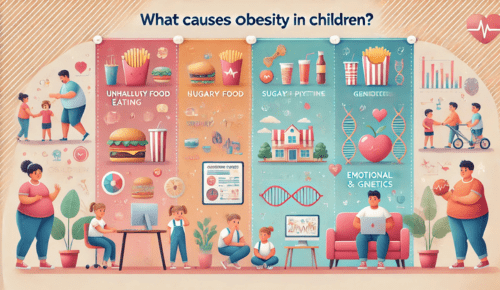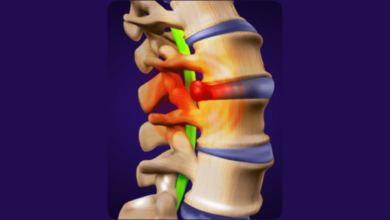What Causes Obesity in Children? A Deep Dive into Childhood Obesity, BMI for Kids, and Weight Loss Drugs for Children

The rise of obesity in children is a growing health crisis affecting families across the globe. While chubby cheeks might seem harmless in early years, childhood obesity is a serious condition that can lead to long-term health complications. Parents, educators, and healthcare providers are asking the critical question: what causes obesity in children, and how can we prevent it? In this article, we’ll also cover how BMI for kids is used to track obesity and explore the emerging role of What Causes Obesity in Children?.
What Causes Obesity in Children?
Obesity in children results from a combination of several factors, and understanding them is the first step toward prevention and treatment.
1. Poor Diet and Nutrition
One of the leading causes of childhood obesity is an unhealthy diet. Children today are consuming more processed and fast food than ever before. Foods that are high in sugar, salt, and unhealthy fats but low in nutrients contribute heavily to obesity in children. Sugary drinks like soda and energy drinks are particularly harmful, adding empty calories with little nutritional value.
2. Lack of Physical Activity
Modern lifestyles often lead children to become more sedentary. With the rise of digital entertainment like smartphones, video games, and social media, physical activity has declined. Less time spent on outdoor play or sports means fewer calories are burned, contributing to childhood obesity.
3. Genetics and Family Behavior
Genetics can influence metabolism and fat storage, making some children more prone to obesity in children. However, family lifestyle habits often play a bigger role. If parents lead sedentary lives and consume unhealthy diets, children are likely to adopt the same behaviors, increasing their risk of childhood obesity.
4. Psychological and Emotional Factors
Emotional well-being also affects eating habits. Children dealing with stress, anxiety, or depression may turn to food for comfort, leading to overeating and eventually obesity in children.
5. Environmental Factors
Living in areas with limited access to healthy foods or safe recreational spaces increases the likelihood of childhood obesity. Families with lower socioeconomic status may also face challenges in affording fresh fruits, vegetables, and lean proteins.
Understanding BMI for Kids
BMI for Kids is a key tool used by healthcare providers to determine if a child is within a healthy weight range. BMI for kids (Body Mass Index) is calculated using a child’s height and weight, but unlike adults, it must be interpreted according to the child’s age and gender because children grow at different rates.
According to the CDC’s BMI for kids guidelines:
- Below the 5th percentile = Underweight
- 5th to 85th percentile = Healthy weight
- 85th to 95th percentile = Overweight
- 95th percentile and above = Obese
While BMI for kids is a useful screening tool, it should be combined with other health assessments to determine whether a child is truly at risk of childhood obesity and its complications.
The Health Risks Linked to Childhood Obesity
Childhood obesity doesn’t just affect a child’s physical appearance; it can lead to severe health issues, such as:
- Type 2 diabetes
- Hypertension
- High cholesterol
- Asthma
- Joint pain and bone issues
- Nonalcoholic fatty liver disease (NAFLD)
Additionally, obesity in children can result in emotional problems, including depression, social isolation, and low self-esteem.
Are Weight Loss Drugs for Children an Option?
In extreme cases of childhood obesity, when lifestyle interventions like diet and exercise have failed, doctors may explore weight loss drugs for children. Recently, certain medications have been approved to help adolescents with severe obesity, particularly those dealing with obesity-related health problems.
However, weight loss drugs for children should only be prescribed by a qualified healthcare professional. These medications are typically considered a last resort after behavioral therapy and nutritional counseling have been tried. Weight loss drugs for children are most effective when combined with comprehensive lifestyle changes, including healthier eating patterns and increased physical activity.
Conclusion
Preventing and managing obesity in children requires a multifaceted approach. Parents should focus on promoting a balanced diet, encouraging active play, monitoring BMI for kids, and seeking professional help when necessary. In rare cases, weight loss drugs for children may be recommended, but they should always be part of a broader, long-term health strategy.
By addressing the root causes of childhood obesity early, we can help the next generation grow up healthy, active, and confident.





